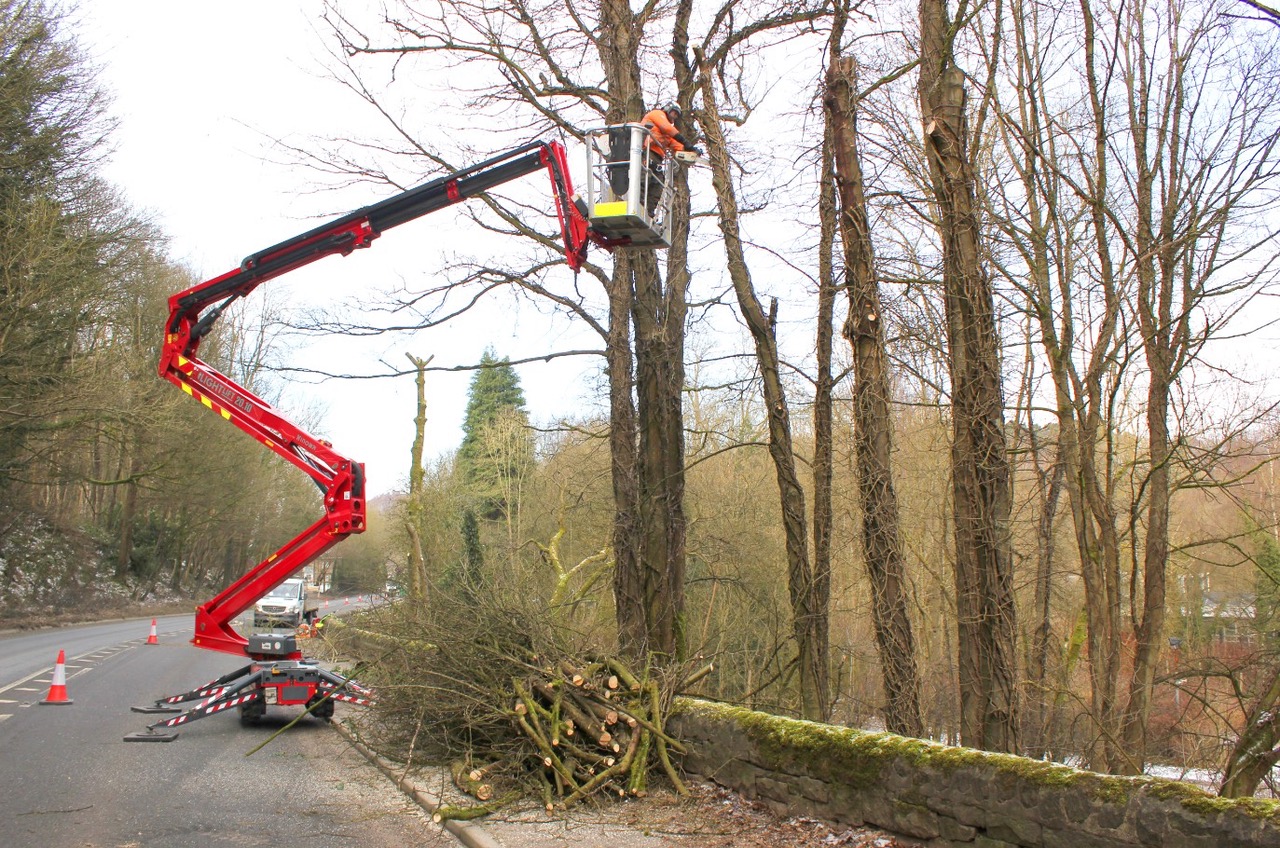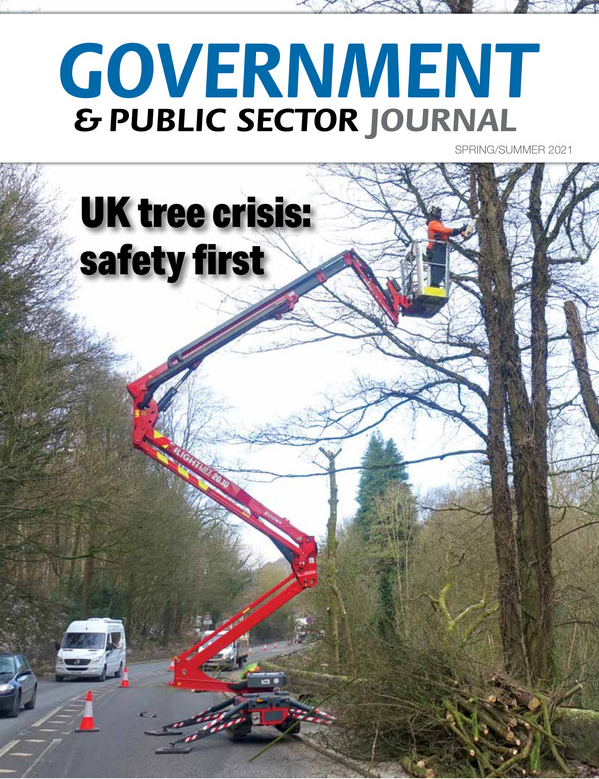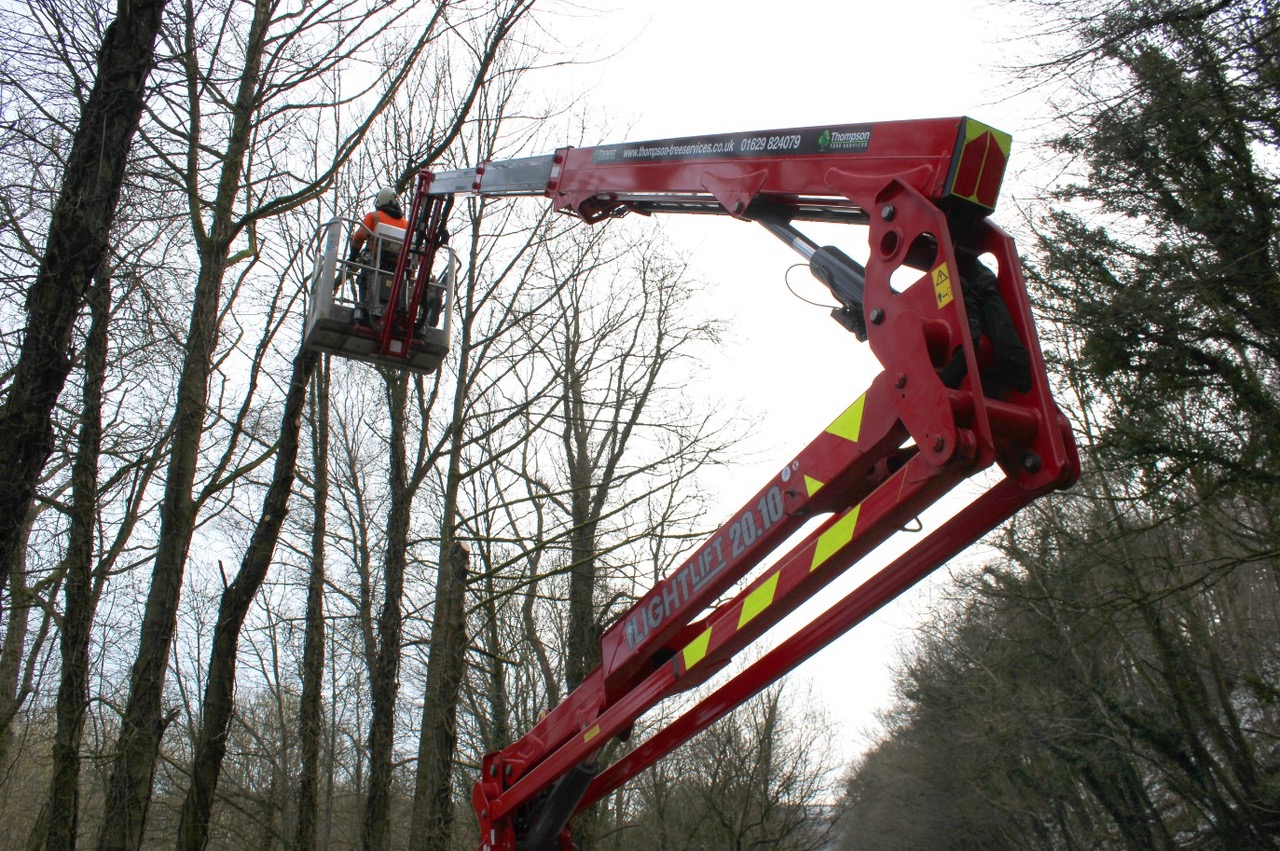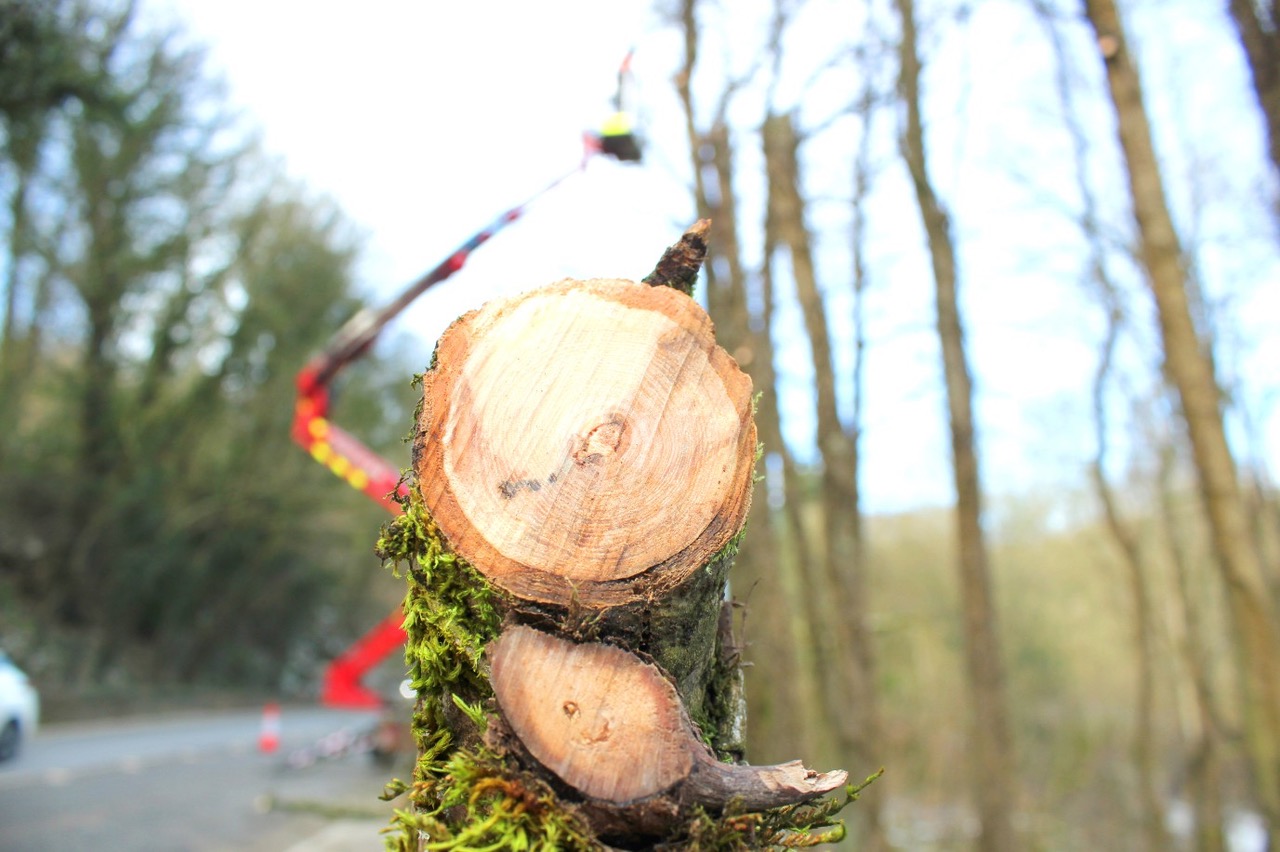

The ash is one of the most common trees in the UK and is a much loved part of the landscape. Now, though, it is under serious and sustained threat from ash dieback.
Which means, over the coming years, another common sight will be an ash tree accompanied by a bright red mobile elevating working platform (MEWP), the Hinowa spider platform.
The Hinowa ‘spider’ is the access platform of choice for most tree surgeons. Distributed in the UK by Access Platform Sales, they are increasingly vital tools for responding to ash dieback by inspecting, reducing or felling trees that have succumbed to the disease.
Brittle branches unsafe for climbing
Over time, ash dieback leaves trees brittle and unstable which means rope climbing – the traditional method used by trees surgeons to get up close and personal with trees – becomes too dangerous.
Ash dieback, also known as chalara, is by far the biggest challenge to the UK’s treescape over the next two decades. The Woodland Trust estimates it will wipe out over 80% of the UK’s 126m ash trees.
That means the crisis will also be a key driver in a trend away rope climbing towards the safer and, in many cases, more productive method of working from platforms.

This article has also been published in the spring/summer 2021 edition of the Government and Public Sector Journal.
Working on trees – the rise of the spider
The seed that has seen the rise of the spider platform in the tree management industry was sown with the publication, 16 years ago, of the Working at Height Regulations 2005.
They enshrined in law a duty to carry out an assessment of the risks associated with working at height and to always select the safest practical options available.
That placed the benefits of working from a platform to the fore. Since then, there has been a steady move towards the adoption by tree surgeons of MEWPs, and spider platforms in particular.
In fact, from the word go, Hinowa has designed its spider platforms with the needs of the tree management industry front and centre.
The platforms have tracks for moving across rough and low loadbearing ground. In transport (tracking) mode they are ultra-narrow to move through confined spaces. Their outriggers are then deployed to create a firm and safe working platform. Key, also, is the platform’s exceptional outreach.
Arborist James Plaskett, owner of Access 2 Trees in Shropshire, shares the views of many tree surgeons, saying: “Hinowa spider platforms are perfect for tree work, and have replaced rope climbing in most cases.”

‘50% take-up of MEWPs’ – association
The Arboricultural Association has supported the move to working from MEWPs. Its code of practice has a risk hierarchy that places working from platforms firmly above rope work as the most desirable option.
However, Simon Richmond, the association’s technical officer, admits the industry has some way to go to fully adopt working from MEWPs.
He says: “I would say we’re not very much over halfway. A lot of tree surgeons want to stick to rope work because it’s what they know. But when forward-thinking ones invest in platforms, they invariably see the benefits and don’t want to go back.”
Those benefits include winning new business from agencies, like the National Trust and English Heritage, which have firm policies that require working from platforms in all but exceptional circumstances.
Working from Hinowa spider platforms can also sharply increase productivity. They also improve quality. This aids long-term tree health, as crowns can be trimmed more precisely from a platform.
Tightening control – two-rope working
Tree surgeons are also likely to look to platforms more thanks to the Health and Safety Executive’s (HSE) insistence on the introduction of two-rope working.
When the 2005 regulations came in, tree surgeons were allowed to keep single rope anchor points, the industry standard at the time. From 2020, the HSE has required two. It had lost patience, it explained, with regular serious injuries and deaths from falls.
It is a sign, say industry experts, that the days of widespread rope climbing for tree management are numbered. It will increasingly become a niche practice, used in exceptional circumstances.

Spider platforms and ash dieback
Ash dieback will have an increasingly important influence on the take-up of access platforms for tree work. The effect of the disease on trees is still the subject of scientific study.
However, it is acknowledged that as ash dieback takes hold, it makes branches increasingly brittle. As a result, many tree surgeons have decided climbing trees that have the disease is off limits.
Either they must be reduced from MEWPs, like Hinowa spiders, or remotely, using equipment like tree sheers or grapple saws. Given the wider use of spider platforms, they are the most common alternative.
Ash dieback fact file
Scientific name Hymenoscyphus fraxineus
Pathogen Fungus
Origin Asia
First identified in UK 2012
Number of ash trees in Britain 126 million
Proportion of all broadleaf trees 11%
Most common in South West (12.6%)
East Midlands (12.7%)
Proportion expected to die 80%
Estimated economic cost £15 billion
In March 2020, Thompson Tree Services used its Hinowa Lightlift 20.10 to remove trees infected with ash dieback along a main road near Matlock in Derbyshire.
Managing Director Jack Thompson said: “The trees were a danger to road users and pedestrians. Working from our Hinowa was the only sensible way to work on them. They were just too dangerous to climb.”
In some cases, it is not ash dieback that represents the primary threat, but secondary infections as the tree weakens, for example Armillaria, a fungus that rots tree roots. These trees will be particularly dangerous to climb. In some cases, they collapse even as they are being felled.
Access platforms also have a role to play in surveying woodland and monitoring the spread of the disease as part of a sustainable approach to countering its impact.
Ash dieback is a tragedy in terms of the impact on the British landscape. Ironically, though, it is accelerating the trend towards using MEWPs, most commonly spider platforms, to work on trees, so is spreading safer practice as well.
Simon Richmond says: “Using MEWPs denotes a higher level of professionalism. It’s why more clients are stipulating they should be used when working at height. The development of ash dieback will only reinforce that trend.”
Don’t add a ‘crime’ to a disaster
If you find trees infected with ash dieback on your land, don’t fell them straight away, he adds.
“Property owners who find ash dieback often fell the infected trees and others in the same stand. In my view, this adds a crime to a natural disaster, because it appears around 15% of trees are either resistant to the disease or can recover from it,” he says.
Instead, property owner should monitor the development of the disease, using a four-stage model advocated by the association, and only fell those that it is clear will succumb.
He explains: “Younger trees are more susceptible to ash dieback. That means, if we can save the older, more resistant ones we have a stock from which we can start to rebuild our ash populations.”
Find out more about how Hinowa spider platforms can support safe and productive tree management. Call APS on 01480 891251.

